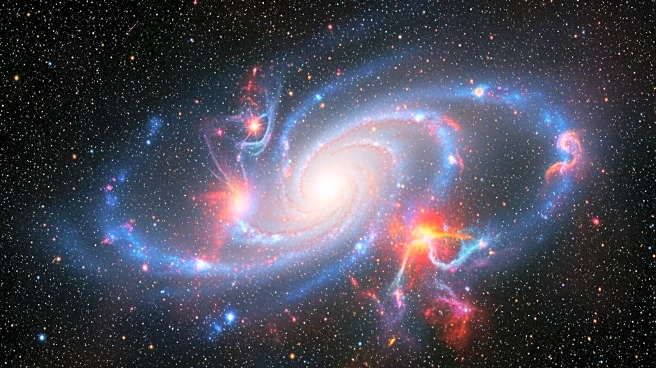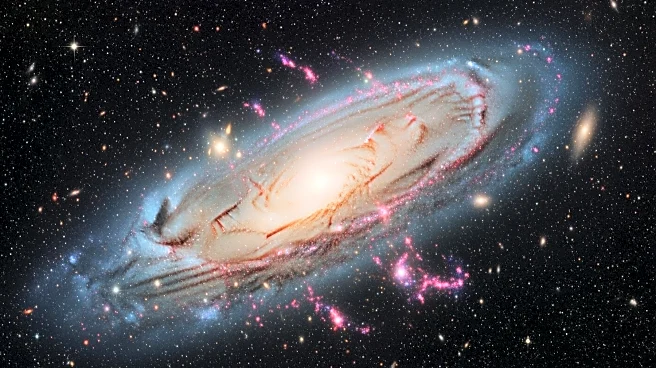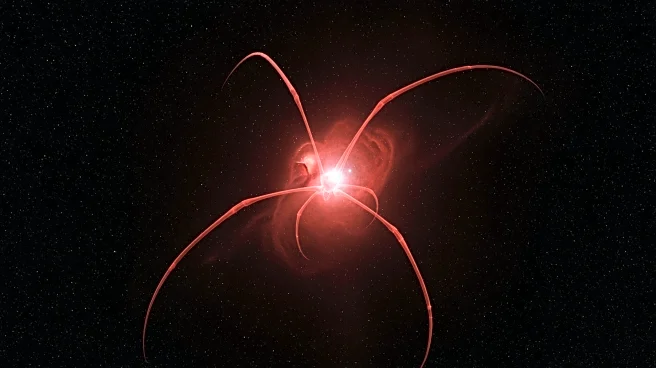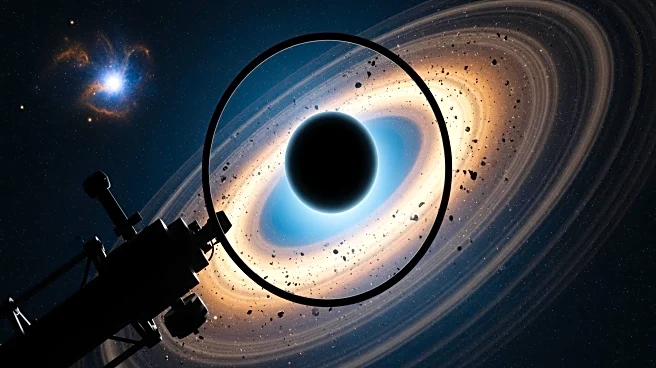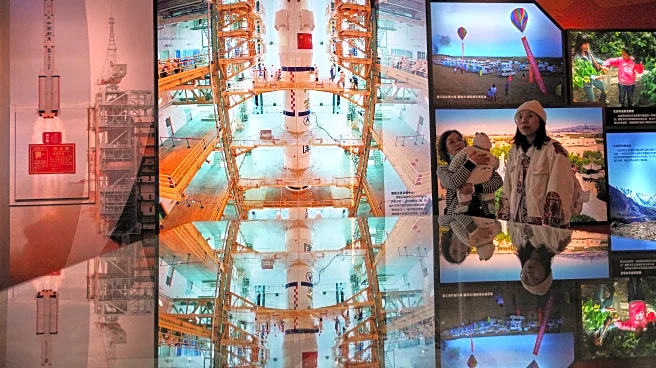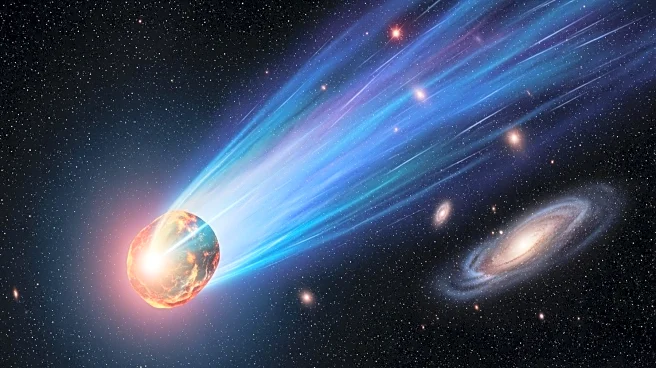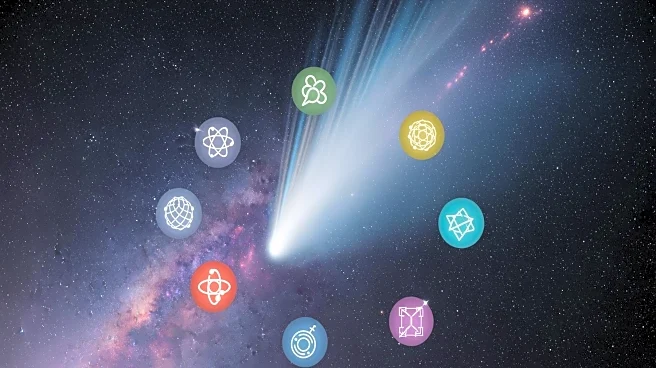What's Happening?
Astronomers have released the largest low-frequency radio color image of the Milky Way, showcasing a detailed cosmic panorama that includes supernova remnants, stellar nurseries, pulsars, and the intricate
glow of gas and dust. This image was created using data from the Murchison Widefield Array (MWA) telescope in Western Australia, combining observations from two major surveys, GLEAM and GLEAM-X. The new image is twice as sharp, ten times more sensitive, and twice as wide as the previous version released in 2019. According to the International Centre of Radio Astronomy Research (ICRAR), this vibrant image offers an unparalleled perspective of the galaxy at low radio frequencies, providing insights into star evolution, formation, interaction, and demise. Over 18 months, researchers processed and merged data from the surveys, cataloging nearly 100,000 radio sources.
Why It's Important?
The release of this expansive view of the Milky Way is significant for the field of astronomy as it provides a deeper understanding of the galaxy's hidden structures. By observing the galaxy in low-frequency radio light, astronomers can penetrate dense clouds of dust and gas that obscure visible wavelengths, revealing supernova remnants and regions of ionized gas where new stars are forming. This image also offers new insights into pulsars, rapidly spinning neutron stars with powerful radio pulses. The map sets the stage for future astronomical research, particularly with the upcoming Square Kilometre Array Observatory's SKA-Low telescope, which will further probe the Milky Way with unprecedented sensitivity and detail.
What's Next?
The newly released image is interactive, allowing viewers to explore the Southern Galactic Plane's star-packed regions and zoom in on various cosmic phenomena. This milestone in astronomy paves the way for the Square Kilometre Array Observatory's SKA-Low telescope, expected to be completed within the next decade. This telescope will enhance the study of the Milky Way and beyond, offering more detailed observations and potentially uncovering new astrophysical structures. Researchers and astronomers will continue to analyze the data from this image to gain further insights into the galaxy's evolution and the behavior of celestial objects.
Beyond the Headlines
This development in astronomy highlights the importance of technological advancements in telescopes and data processing. The ability to capture low-frequency radio images of the galaxy opens new avenues for understanding cosmic phenomena that are otherwise difficult to observe. The collaboration between international research centers and the use of supercomputing resources exemplifies the global effort in advancing astronomical research. As technology continues to evolve, similar projects may lead to discoveries that challenge existing theories and expand our knowledge of the universe.
